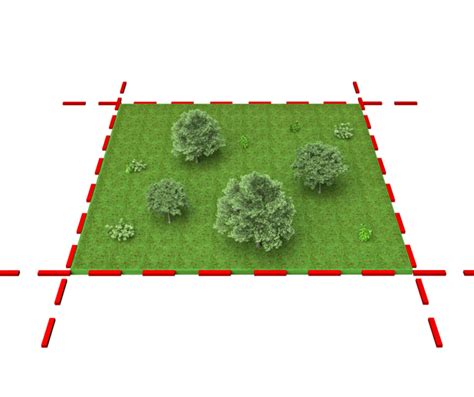How To Sell Part Of Your Land
Ronan Farrow
Apr 02, 2025 · 4 min read

Table of Contents
How to Sell Part of Your Land: A Comprehensive Guide
Selling a portion of your land can be a significant decision, whether you're looking to generate income, downsize, or facilitate development. This comprehensive guide will walk you through the essential steps, ensuring a smooth and profitable transaction. We'll cover everything from assessing your property to navigating legal complexities.
1. Assessing Your Land and Determining the Sale Portion
Before diving into the market, thoroughly assess your property. This involves more than just looking at the acreage.
1.1. Understanding Your Land's Value
-
Professional Appraisal: Hiring a qualified appraiser is crucial. They'll provide an objective estimate of your land's market value, considering factors like location, size, zoning regulations, and any existing improvements. This valuation is vital for setting a realistic selling price.
-
Comparable Sales (Comps): Research recent land sales in your area with similar characteristics. This helps you understand current market trends and price points. Real estate websites and local multiple listing services (MLS) are excellent resources.
-
Identify the saleable portion: Carefully delineate the exact area you intend to sell. Consider factors such as access to utilities, topography, and potential for development. Clear boundaries are crucial to avoid future disputes.
1.2. Zoning and Legal Considerations
-
Zoning Regulations: Contact your local planning department to understand zoning regulations that impact your land. These regulations dictate allowable land uses and may affect the saleability of a particular portion.
-
Easements and Rights-of-Way: Identify any existing easements or rights-of-way that might affect the value or usability of the land you intend to sell. These legal rights granted to others may limit what you can do with the property.
-
Surveys and Boundary Lines: A professional survey is essential to accurately define property lines and ensure the portion you're selling is clearly demarcated. This prevents future boundary disputes with neighbors or buyers.
2. Preparing Your Land for Sale
Once you've assessed your land, it's time to prepare it for the market.
2.1. Improving Curb Appeal (Where Applicable)
Even if you're selling undeveloped land, presentation matters.
-
Clear the Land: Remove any debris, overgrown vegetation, and unwanted structures. A clean, organized property is more attractive to potential buyers.
-
Access and Visibility: Ensure easy access to the property and good visibility from the road. This may involve improving existing driveways or creating a clear path.
2.2. Marketing Your Land
-
Professional Photography: High-quality photos are essential for showcasing your land's features. Aerial photography can be particularly effective for larger properties.
-
Detailed Description: Create a compelling property description highlighting key features, potential uses, and any unique selling points.
-
Choose Your Listing Platform: Decide where to list your property – local real estate agents, online real estate portals, or a combination of both.
3. The Sale Process
Navigating the legal aspects of selling land requires careful attention.
3.1. Finding a Real Estate Agent (Optional but Recommended)
-
Agent Expertise: A real estate agent specializing in land sales can provide invaluable expertise in pricing, marketing, and negotiating.
-
Negotiation and Closing: They'll handle negotiations with potential buyers and guide you through the closing process, ensuring a smooth transaction.
3.2. Legal Documentation and Contracts
-
Land Sale Agreement: This legally binding document outlines the terms of the sale, including the price, payment terms, and closing date.
-
Title Search and Insurance: A title search is essential to verify ownership and identify any encumbrances on the property. Title insurance protects the buyer and seller from potential title disputes.
-
Closing Process: The closing process involves transferring ownership of the property to the buyer, ensuring all legal documents are properly executed.
4. Post-Sale Considerations
After the sale, several important steps remain.
4.1. Recording the Deed
Ensure the deed transferring ownership is properly recorded with the local authorities. This legally confirms the change in ownership.
4.2. Taxes and Capital Gains
Understand the tax implications of selling your land. You may be liable for capital gains taxes on the profit from the sale. Consult with a tax professional to determine your tax obligations.
Selling a portion of your land is a complex process. By carefully following these steps, you can significantly increase your chances of a successful and profitable transaction. Remember to seek professional advice from appraisers, real estate agents, surveyors, and legal professionals when needed. Good luck!
Featured Posts
Also read the following articles
| Article Title | Date |
|---|---|
| How To Tell If A Fish Is Blind | Apr 02, 2025 |
| How To See Into The Spiritual Realm | Apr 02, 2025 |
| How To Reset Matrix Stairmaster | Apr 02, 2025 |
| How To Score Better In Golf | Apr 02, 2025 |
| How To Sell Used Equipment | Apr 02, 2025 |
Latest Posts
-
If I M Shooting High How Do I Adjust My Scope
Apr 03, 2025
-
Howe Center Rutland Vt
Apr 03, 2025
-
Howa Super Lite Review
Apr 03, 2025
-
Howa Carbon Elevate 6mm Arc
Apr 03, 2025
-
Howa Alpine Mountain Rifle
Apr 03, 2025
Thank you for visiting our website which covers about How To Sell Part Of Your Land . We hope the information provided has been useful to you. Feel free to contact us if you have any questions or need further assistance. See you next time and don't miss to bookmark.
